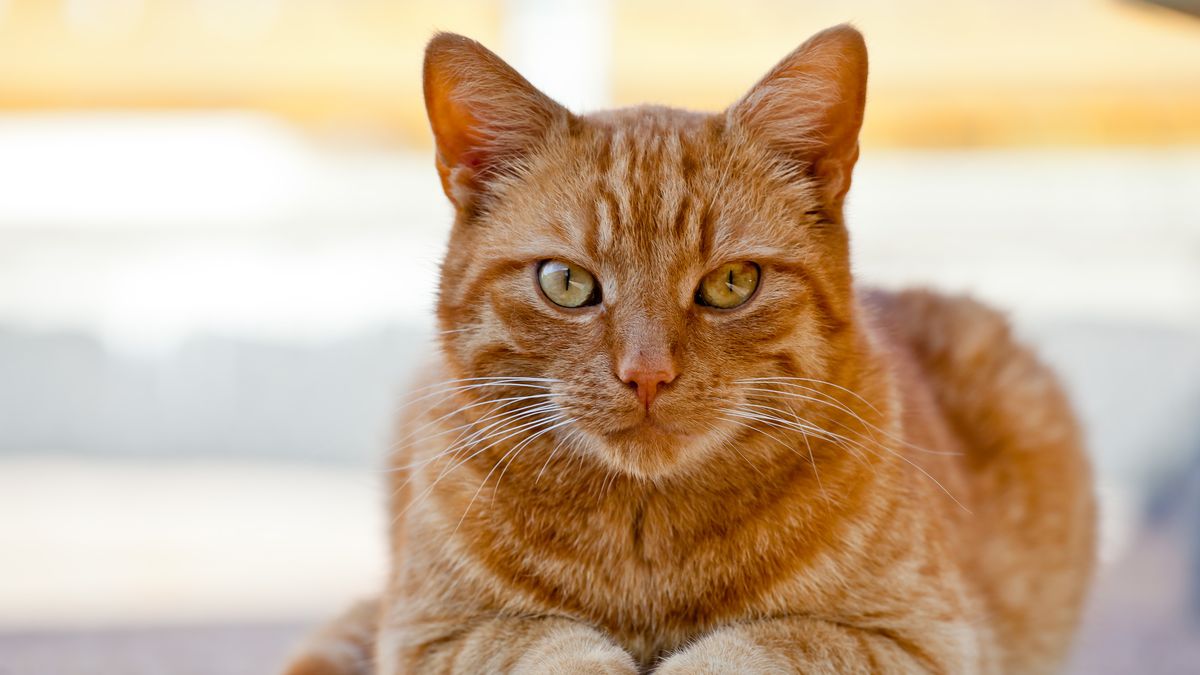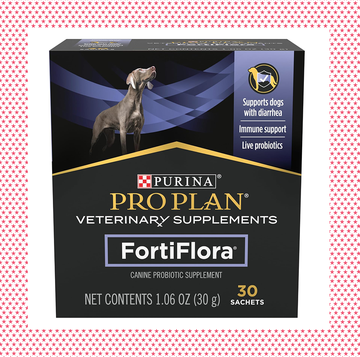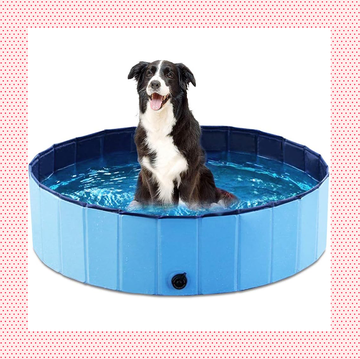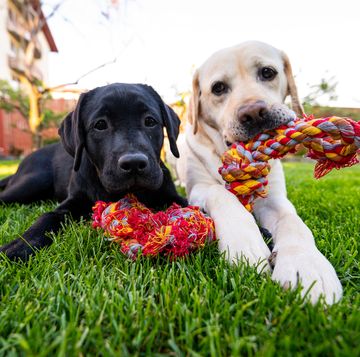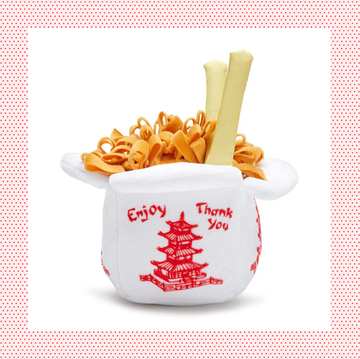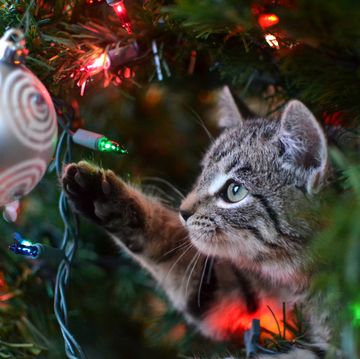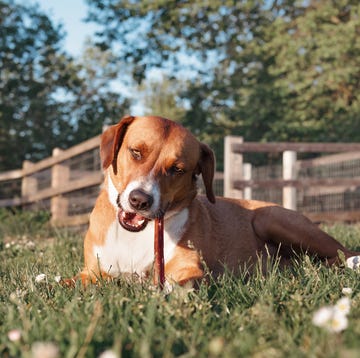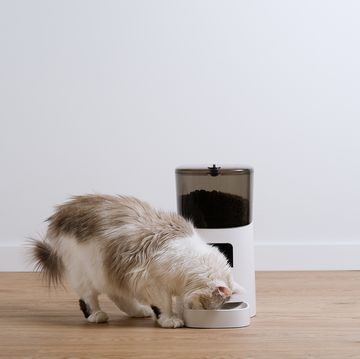1American Shorthair
 Image by Chris Winsor//Getty Images
Image by Chris Winsor//Getty ImagesThis popular cat breed can produce orange tabby cats with a classic, mackerel, or ticked tabby pattern.
- Height: Medium-sized, 9 to 11 inches
- Weight: Average, 8 to 15 pounds (males are typically larger and heavier than females)
- Personality: Friendly, adaptable, easygoing, affectionate with their families, sociable, good with children and other pets, playful, and not overly demanding
- Coat: Short, dense, and plush
- Color: Solid colors, bi-colors, calico (mix of white, black and orange), and various patterns
- Life Expectancy: 15 to 20+ years if healthy
2British Shorthair
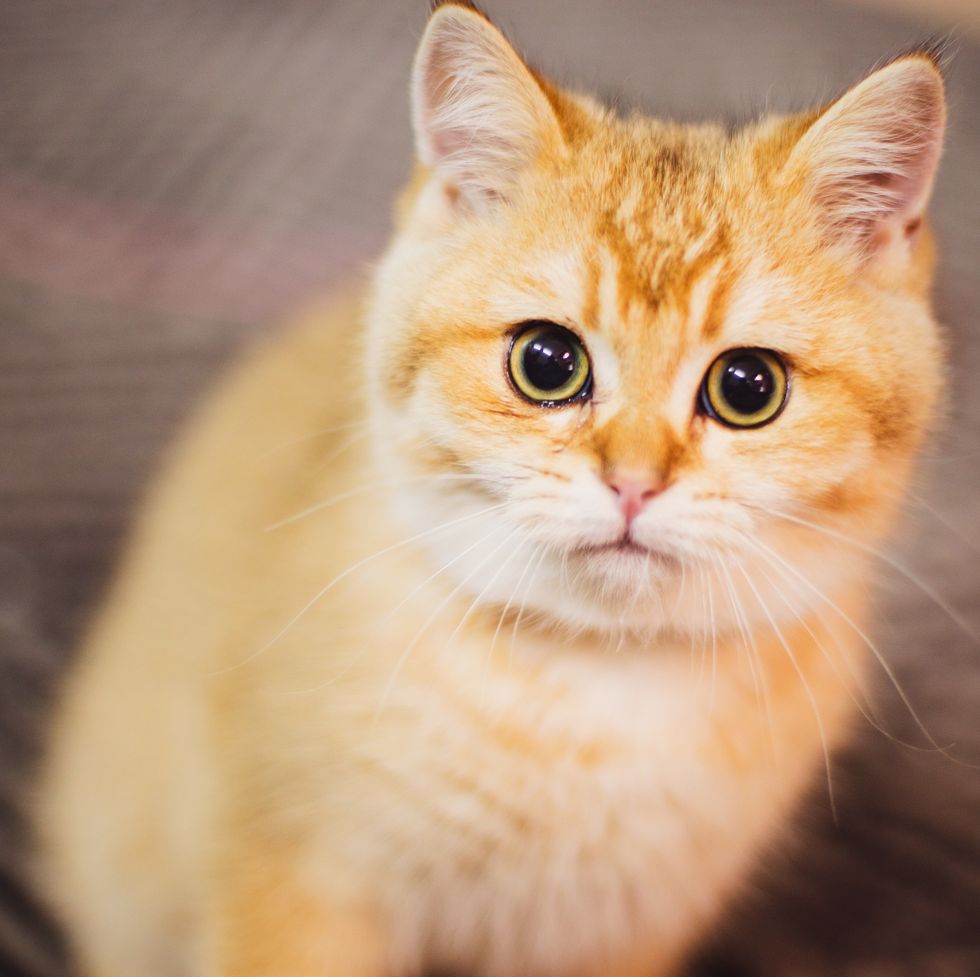 Kilito Chan//Getty Images
Kilito Chan//Getty ImagesBritish Shorthairs, also a common cat breed, can have orange tabby cats as well as solid orange cats.
- Height: Medium-sized, 12 to 14 inches
- Weight: Slightly above average, 11 to 22 pounds (males are typically larger and heavier than females)
- Personality: Calm, easygoing, reserved, well-mannered, not overly active, affectionate with their families, not demanding, good with children and other pets
- Coat: Short, dense, and plush
- Color: British blue (solid blue-gray fur is the traditional color for this breed), but they also come in various solids, bi-colors, calico, and other patterns
- Life Expectancy: 12 to 20+ years if healthy
3Maine Coon
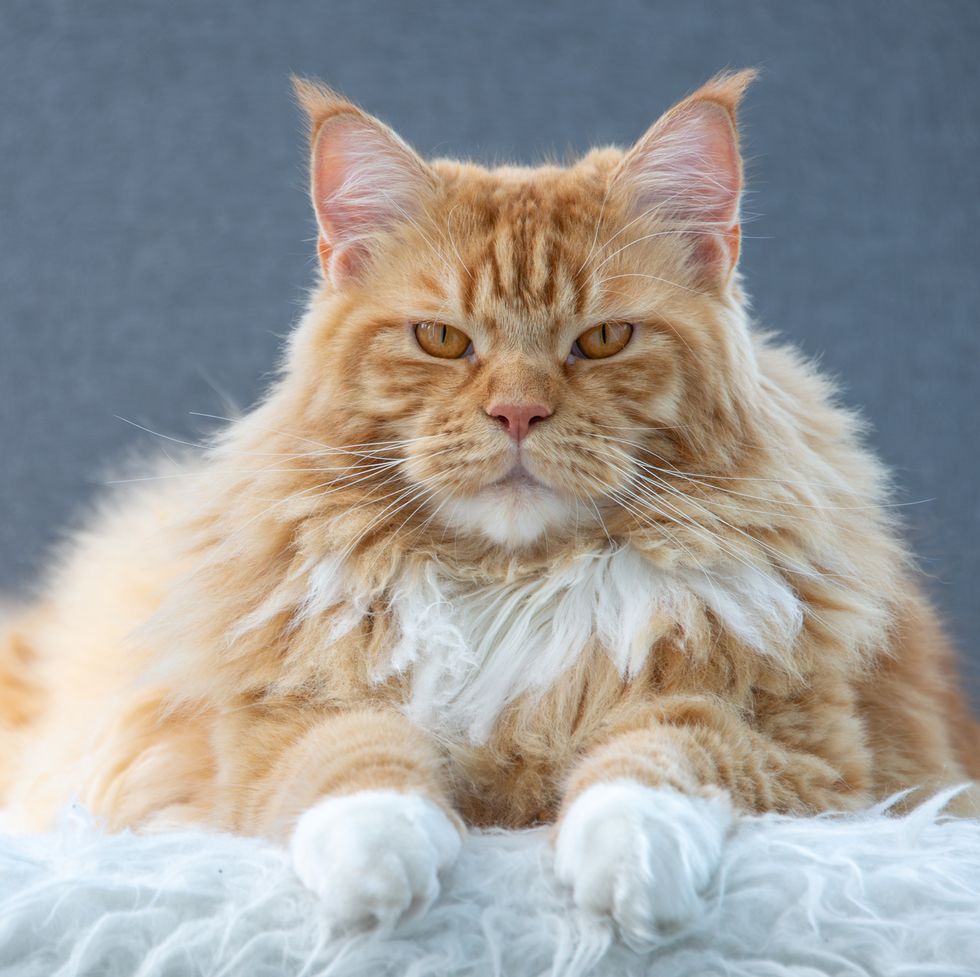 koenigpk / 500px//Getty Images
koenigpk / 500px//Getty ImagesOrange tabby Maine Coons are quite common and striking in appearance. They are one of the largest domestic cat breeds and are sometimes described as "gentle giants."
- Height: Large, 10 to 16 inches
- Weight: Above average, 10 to 25 pounds (males are typically larger and heavier than females)
- Personality: Friendly, affectionate, sociable, intelligent, playful, retain kitten-like playfulness as adults, vocal, great with children and other pets
- Coat: Luxurious, semi-longhaired coat that is soft and dense with ruff of fur around their neck and a bushy tail
- Color: Wide range of coat colors and patterns, but tabby pattern is most common; can also be solid, bi-color, and calico
- Life Expectancy: 12 to 15+ years if healthy
Advertisement - Continue Reading Below
4Persian
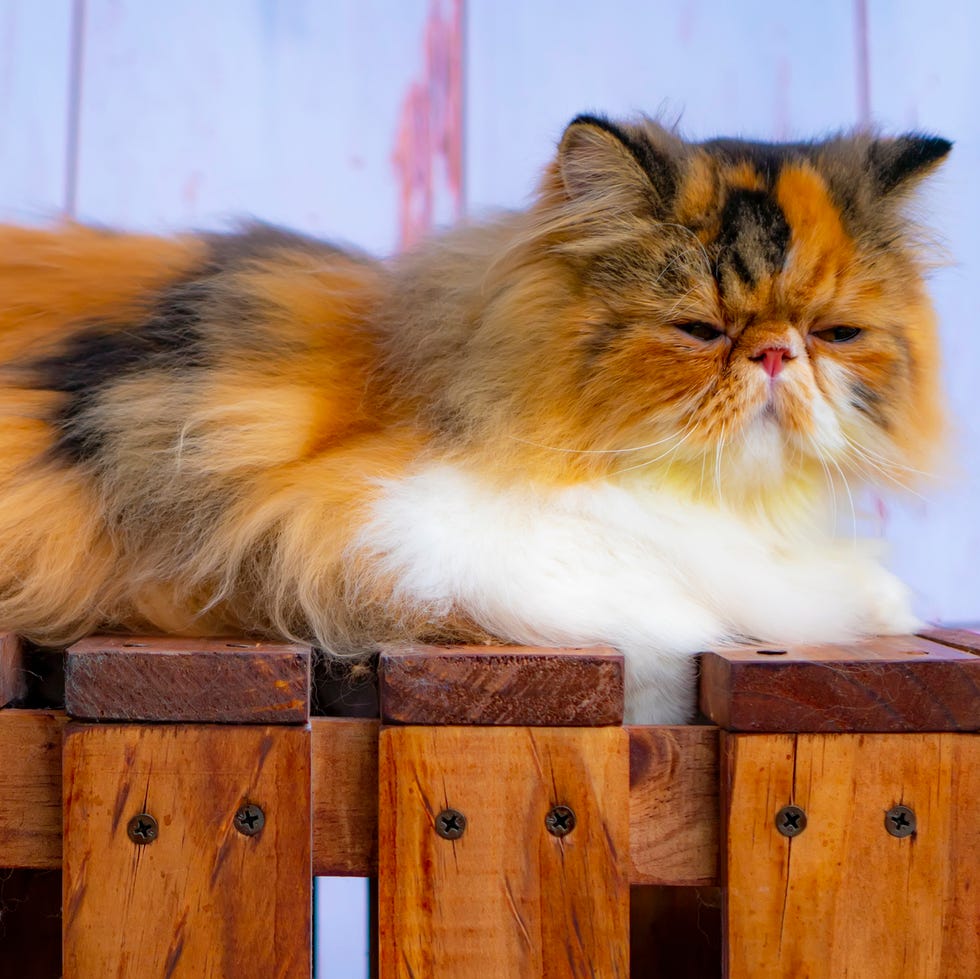 Kryssia Campos//Getty Images
Kryssia Campos//Getty ImagesPersian cats can come in various colors, including orange.
- Height: Small- to medium-sized, 8 to 10 inches
- Weight: Below average, 7 to 10 pounds (males are typically larger and heavier than females)
- Personality: Calm, gentle, affectionate, quiet, not overly active, prefer a peaceful atmosphere, and devoted to human companions
- Coat: Long, silky, and thick-double coat (will need to be brushed and groomed regularly)
- Color: Various colors and patterns with white, black, cream, blue, chocolate, and lilac being more common than orange; solid colors, bi-color, calico, tabby
- Life Expectancy: 12 to 16+ years if healthy
5Scottish Fold
 Photo by Supoj Buranaprapapong//Getty Images
Photo by Supoj Buranaprapapong//Getty ImagesOrange Scottish Folds may have the signature folded ears and a range of orange shades.
- Height: Small- to medium-sized, 8 to 10 inches
- Weight: 6 to 13 pounds (males are typically larger and heavier than females)
- Personality: Sweet, affectionate, friendly, social, love being around human companions, playful yet gentle, good with children and other pets
- Coat: Short- or long-haired coats; fur is soft and dense
- Color: Variety of coat colors and patterns, like solid colors, bi-color, and tabby and various shades of black, gray, cream, brown
- Life Expectancy: 12 to 15+ years if healthy, though Scottish Fold cats are prone to osteochondrodysplasia, a genetic condition which can affect their bone and cartilage development
6Munchkin
 Jerry Jian//Getty Images
Jerry Jian//Getty ImagesMunchkins, known for their short legs, can also be orange.
- Height: Short cats, 6 to 9 inches
- Weight: Below average, 5 to 9 pounds (but weight can vary depending on age, sex, and genetics)
- Personality: Friendly, playful, outgoing, curious, adaptable, enjoy interactive play, get along with humans (including children) and other pets
- Coat: Short- and long-haired coats; soft fur
- Color: Various colors and patterns, like solid color, bi-color, calico, tabby
- Life Expectancy: 12 to 15+ years if healthy (but Munchkin cats are prone to health issues like dental issues and obesity)
Advertisement - Continue Reading Below
7Manx
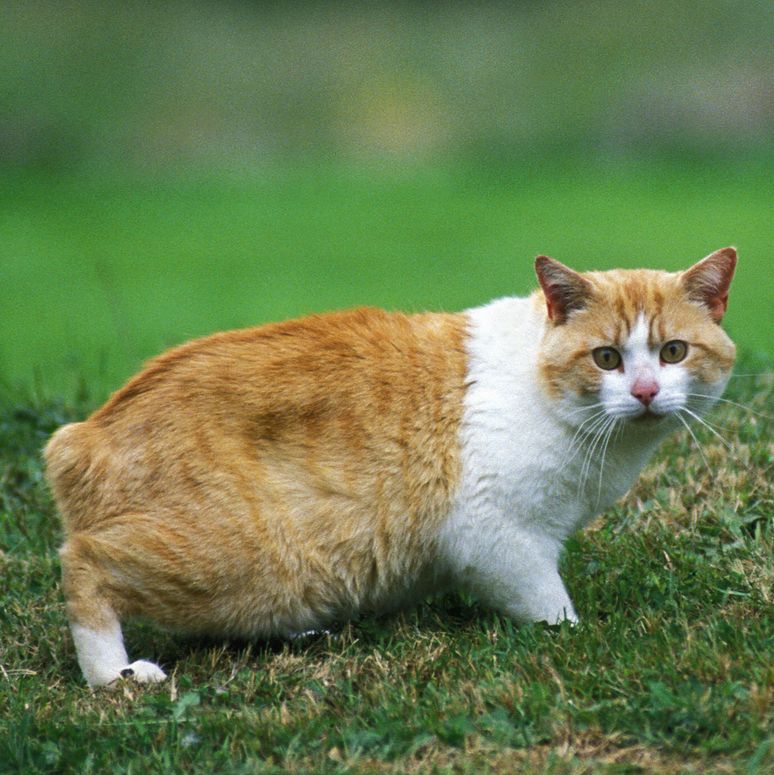 slowmotiongli//Getty Images
slowmotiongli//Getty ImagesManx cats may exhibit orange tabby patterns or solid orange coats.
- Height: Medium-sized, 8 to 10 inches
- Weight: Average, 8 to 12 pounds (males are typically larger and heavier than females)
- Personality: Friendly, intelligent, playful, affectionate, social, adaptable, enjoy interacting with humans, get along well with children and other pets
- Coat: Short- and long-haired; fur is dense and soft
- Color: Various colors and patterns, like solid colors, bi-color, calico, tabby, and more
- Life Expectancy: 12 to 15+ years if healthy (but prone to some health issues, like spinal and tail abnormalities due to the genetic mutation that results in their short tails or taillessness)
8Cornish Rex
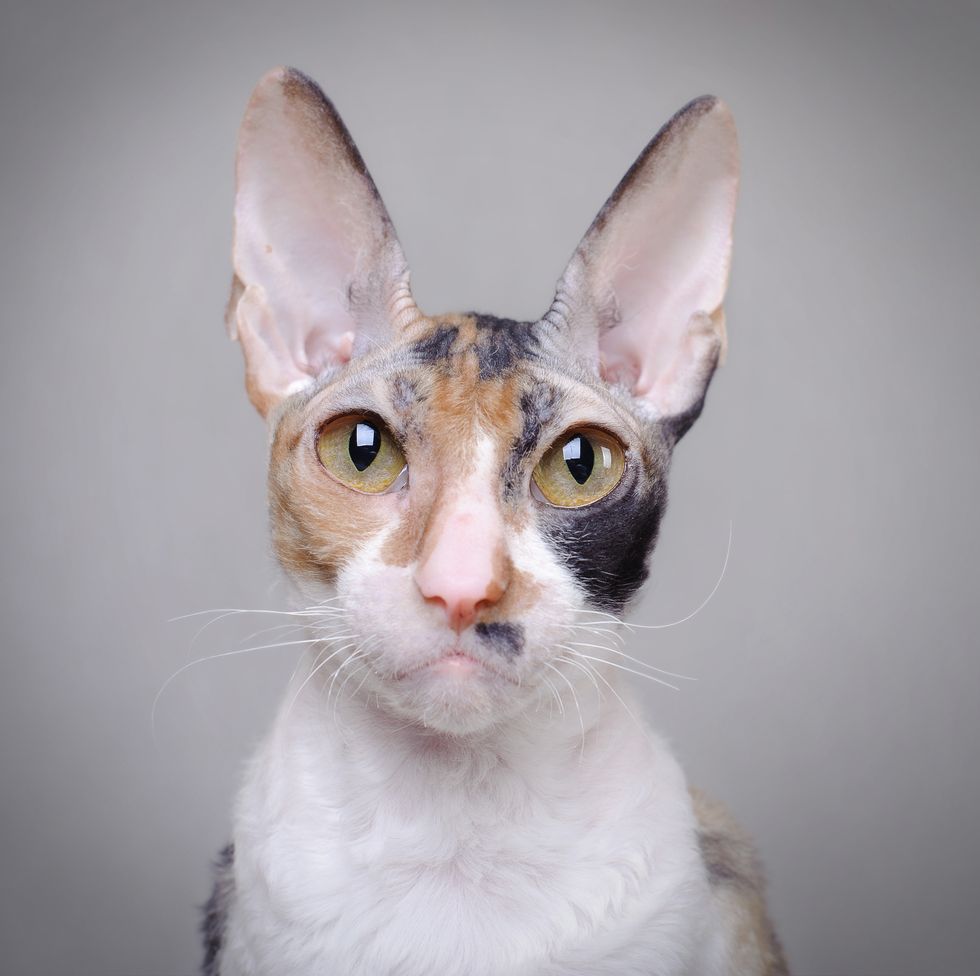 Waldek Dąbrowski / 500px//Getty Images
Waldek Dąbrowski / 500px//Getty ImagesThis breed can have orange cats with their distinctive curly fur.
- Height: Medium-sized, 8 to 10 inches
- Weight: Below average, 5 to 8 pounds
- Personality: Playful, extroverted, intelligent, curious, love to play, affectionate, outgoing, social, enjoy interacting with human companions
- Coat: Unique, short, curly, and soft coat; velvety, suede-like texture (may need to wear a sweater during cooler weather)
- Color: Various colors and patterns, like solid colors, bi-color, calico, tabby
- Life Expectancy: 12 to 15 years if healthy
RELATED: 9 Hairless Cat Breeds for an Allergy-Friendly Home
9American Bobtail
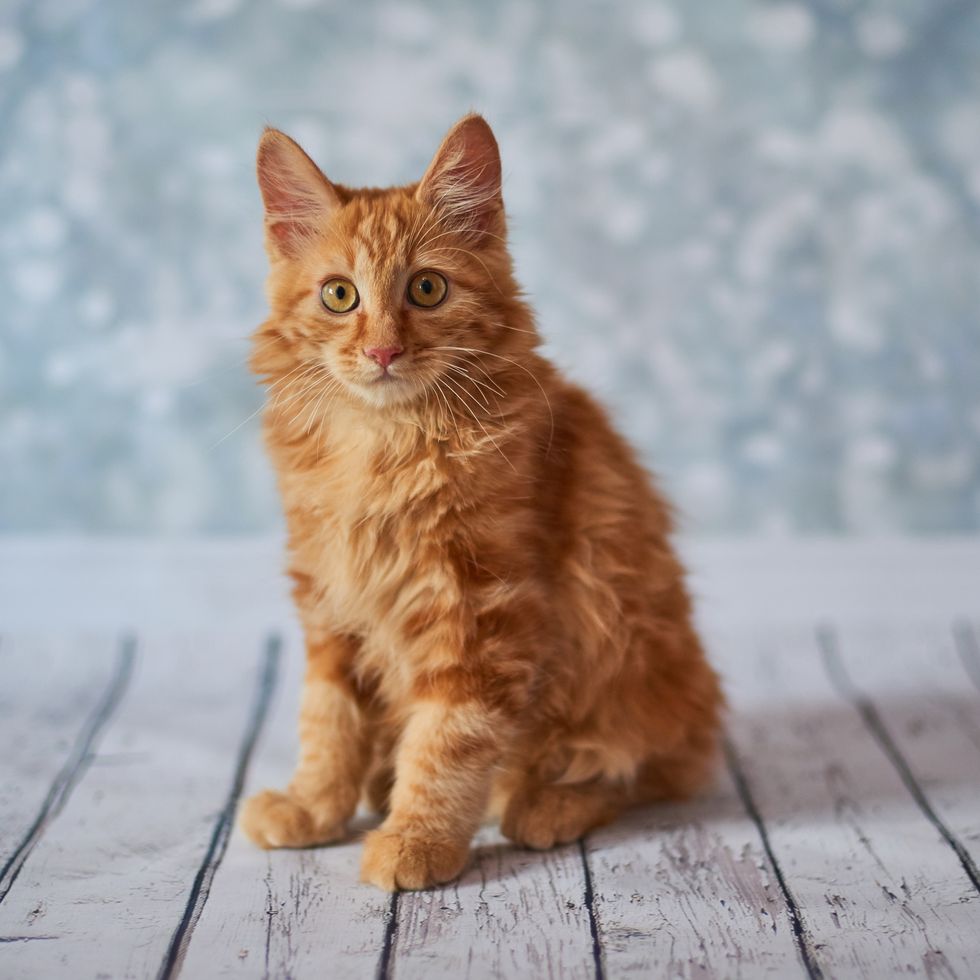 Jane-Khomi//Getty Images
Jane-Khomi//Getty ImagesOrange tabby American Bobtails are not uncommon.
- Height: Medium-sized, 9 to 12 inches
- Weight: Average, 7 to 16 pounds (males are typically larger and heavier than females)
- Personality: Friendly, playful, intelligent, social, affectionate, adaptable, form strong bonds with human families, known to have dog-like behavior, enjoy playing fetch and walking on a leash, get along well with children and other pets
- Coat: Semi long-haired, thick and dense fur, soft
- Color: Various colors and patterns, like solid colors, bi-color, calico, and tabby
- Life Expectancy: 12 to 16 years if healthy
Advertisement - Continue Reading Below
10Siberian
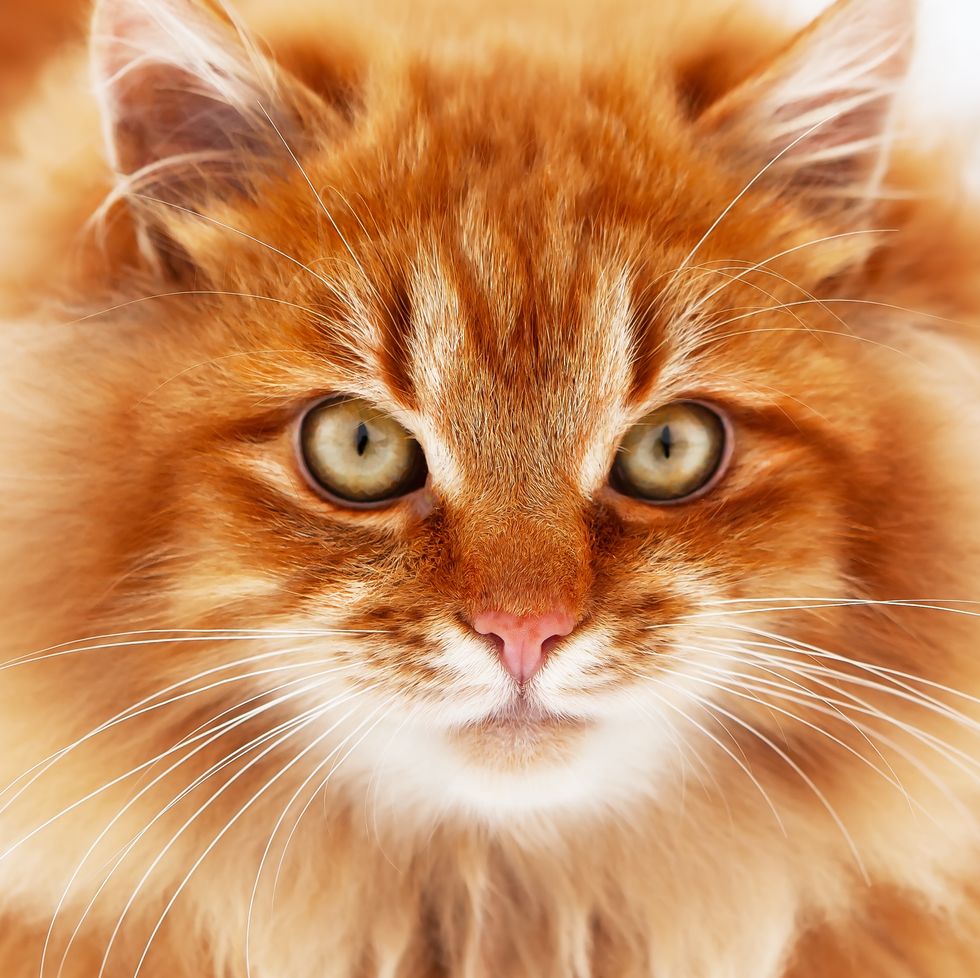 Natallia Saksonova / 500px//Getty Images
Natallia Saksonova / 500px//Getty ImagesWhile not as common, you can find orange Siberian cats as well.
- Height: Medium- to large-sized, 9 to 11 inches
- Weight: Above average, 10 to 20 pounds (males are typically larger and heavier than females)
- Personality: Friendly, affectionate, intelligent, sociable, outgoing, playful, enjoy interacting with humans, can learn tricks, enjoy puzzle toys, known to "talk" and be vocal with owners, great with children and other pets
- Coat: Semi long-haired, dense coat (can thrive in the cold), soft fur
- Color: Various colors and patterns, like solid colors, bi-color, calico, tabby
- Life Expectancy: 12 to 15+ years if healthy
Should you adopt an orange cat?
The short answer is: yes! Adopt an orange fur baby if you want one, but consider the breed also. If you want a lap cat, try for a Maine Coon who are known to act more like pups. If you want a very active kitty, consider the Cornish Rex. But it's also important to note that even if a breed is known to have a certain temperament, it's not an exact science. Many cats — unless they're definitely purebred — will be a mix of breeds and characteristics. Plus, cats in general are just fickle, purebred or not. They're a lot like people; they are born with a personality, and their behaviors will also be dependent on their environment and the people and other animals around them.
RELATED: Why Do Cats Knead? Vets Explain the Reasons Behind the Behavior

Ysolt Usigan is a lifestyle writer and editor with 15+ years of experience working in digital media. She has created share-worthy content for publishers Shape, What To Expect, Cafe Mom, TODAY, CBS News, HuffPo, The Bump, Health, Ask Men, and Best Gifts. A working mom of two, her editorial expertise in parenting, shopping, and home are rooted in her everyday life.
Advertisement - Continue Reading Below
Advertisement - Continue Reading Below
Advertisement - Continue Reading Below
